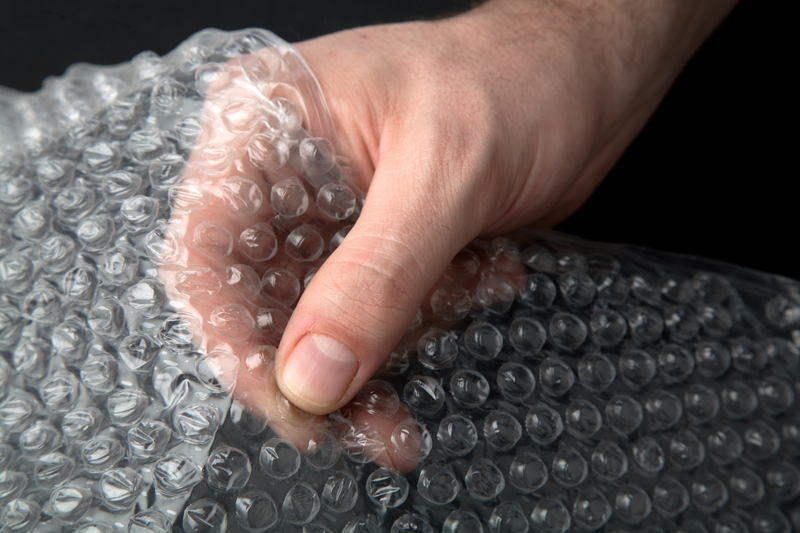Achieve Packing Perfection for Your Next Residential Move
Posted on 26/06/2025
Achieve Packing Perfection for Your Next Residential Move
Preparing for a residential move can be a daunting task, but with proper planning and execution, packing perfection is well within your reach. Whether you're relocating across town or to a new city, mastering residential move packing can save you time, money, and a lot of stress. In this comprehensive guide, we'll walk you through every essential step--from strategic planning to unpacking--so you can ensure a smooth and successful move.

Why Packing Perfection Matters During Your Residential Move
Achieving packing perfection for a move isn't just about fitting everything into boxes. It's about efficiency, protecting your valuables, and minimizing hassles when both leaving your current home and settling in your new one. Let's explore the top benefits you'll enjoy when you aim for packing efficiency:
- Save Time and Energy: Organized packing means less searching and less wasted effort.
- Protect Belongings: Well-packed items are less likely to break or get lost.
- Easy Unpacking: Labeling and grouping makes finding items simple in your new home.
- Less Stress: A clear strategy keeps anxiety levels at bay during a hectic time.
Let's dive into strategies to help you move with packing perfection!
Step 1: Create a Strategic Packing Plan
Start Early - It Always Takes Longer Than You Think
The key to packing perfection for your next move is to give yourself plenty of time. Ideally, start organizing and gathering supplies at least six weeks before your moving day. Waiting until the last minute often leads to rushed packing and misplaced belongings.
Make a Comprehensive Packing Checklist
Begin by making a detailed packing checklist. This comprehensive list should include:
- All rooms and categories (kitchen, living room, bedrooms, bathroom, garage, pets, etc.)
- Essential supplies needed
- High-value items requiring special care
- Tasks to be completed (such as cleaning, utility shut-off, etc.)
A well-crafted checklist keeps you organized and ensures nothing is forgotten. Downloadable templates are available online, or customize your own to suit your unique needs.
Step 2: Declutter for an Easier Move
One of the best ways to achieve packing perfection in residential moving is to pack only what you need. Use this opportunity to declutter and simplify your life.
Sort, Donate, Sell, or Discard
Go through your belongings and separate items into the following categories:
- Keep: Items you love and use regularly.
- Donate: Gently used clothes, toys, or kitchen supplies that could benefit others.
- Sell: Furniture or gadgets of value--use online marketplaces for quick sales.
- Discard: Broken, expired, or worn-out items.
Decluttering lightens your load, saves you money on moving costs, and helps you start fresh in your new home.
Step 3: Gather the Right Packing Materials
Achieving packing perfection for your residential move is impossible without the right supplies. Stock up on:
- Sturdy moving boxes (various sizes)
- Packing tape & tape dispenser
- Bubble wrap or packing paper for fragile items
- Stretch wrap for furniture
- Furniture pads or blankets
- Markers or colored labels for box identification
- Ziploc bags for small parts and accessories
- Scissors, box cutters
Pro Tip: Avoid overused supermarket boxes. Choose dedicated moving boxes--they are sturdier and less likely to collapse.
Step 4: Master Packing Techniques for a Residential Move
Pack by Room, Not by Category
To optimize packing for residential moves, focus on one room at a time. This simplifies labeling and unpacking. Clearly mark every box with:
- Room destination (ex: Living Room, Master Bedroom)
- Contents
- Special instructions (ex: "Fragile" or "Open First")
Use Proper Packing Methods
- Heavy Items on the Bottom: Lighter items go on top to prevent crushing.
- Fill Empty Spaces: Use towels or packing paper to prevent items from shifting.
- Don't Overpack Boxes: Keep each box under 50 lbs for easy lifting and to prevent breakage.
- Wrap Fragile Items Individually: Glass, ceramics, and electronics need individual wrapping for extra safety.
Expert Tip: Look for specialty boxes (like wardrobe boxes and dish packs) for clothing and kitchenware to maximize protection.
Secure Electronics & Valuables
- Take photos of wiring setups before unplugging electronics.
- Use original boxes when possible for electronics, or pad generously.
- Pack jewelry and important documents separately, and transport them yourself.
Step 5: Smart Labeling = Packing Perfection
Labeling isn't just about knowing what's in a box. It's about achieving packing perfection for moving by making the unloading and setup process a breeze.
- Color Code by Room: Use colored tape or stickers for instant room-recognition.
- Inventory List: Keep a digital or paper log of all your boxes and their contents.
- Mark Priority Unpack Items: Clearly note which boxes to open first.
Bonus: Snap a quick photo of the final packed boxes to refer to on moving day and upon arrival.
Step 6: Special Packing Tips for Top Residential Moving Challenges
Packing Fragile Items and Valuables
- Use bubble wrap and packing paper for all breakables.
- Pack plates, dishes, and glassware vertically, not flat.
- Add padding at the top and bottom of each fragile box.
- Label boxes boldly as "Fragile" on all sides.
Handling Large or Awkward Furniture
- Disassemble when possible (remove legs from tables, headboards from beds).
- Keep all hardware in labeled bags, taped to the main component.
- Use furniture pads and stretch wrap to protect finishes and fabric.
Packing for Kids and Pets
- Pack a "move day essentials" bag with favorite toys, snacks, bedding, and comfort items.
- Keep familiar items easily accessible to reduce stress for both kids and pets.
Step 7: Prepare an Essentials Box
Don't forget to pack a box with the items you'll need for the first 24-48 hours in your new home. This enables you to enjoy a comfortable transition, even before you've unpacked everything.
- Medications and basic first aid supplies
- Chargers and important electronics
- Toiletries and shower essentials
- Change of clothes and comfortable shoes
- Disposable plates, cups, and cutlery
- Snacks and water bottles
- Essential kids' and pets' items
- Basic cleaning supplies and toilet paper
- Important documents, keys, and valuables
Pro Tip: Clearly mark your essentials box and transport it with you in your own vehicle if possible.
Step 8: Moving Day Best Practices
Coordinate with Movers or Helpers
Whether you're using a moving company or family and friends, clearly communicate your labeling system and priorities. Share your packing list so that everyone is on the same page.
Protect High-Traffic Areas
- Lay down moving mats or old towels to prevent floor damage.
- Prop open doors for smooth movement in and out.
Final Walkthrough
Before you leave, check all cupboards, closets, and behind doors for forgotten items. This final check ensures nothing is left behind.
Step 9: Achieve Unpacking Perfection in Your New Home
Packing perfection doesn't end on moving day. With everything strategically packed and labeled, unpacking perfection is within reach. Here's how to finish the job strong:
- Unpack essentials first (see above for essentials box)
- Prioritize by room: Set up bedrooms, then bathrooms and kitchen for immediate livability
- Assemble furniture early - use your photos and labeled hardware
- Break down boxes as you go to keep your new home clutter-free
- Recycle or donate packing materials when finished
Take your time to make each space functional and welcoming. With a little patience and your careful plan, you'll feel at home in no time!

Top Packing Perfection FAQs for a Successful Residential Move
- When should I start packing before a move?
Begin packing 6-8 weeks before your move, starting with items you use least. - What's the best way to pack clothes?
Use wardrobe boxes for hanging clothes, and roll or fold others in suitcases or sturdy boxes. - How can I protect fragile items during a move?
Wrap items individually in bubble wrap or paper, and cushion with towels or soft items. - Is it better to hire professional packers?
If time is limited, pros ensure expertly packed, insured items. For DIY moves, use our tips above! - How do I keep track of all my boxes?
Number or code each box, then maintain a master inventory list or spreadsheet.
Conclusion: Packing Perfection Is Achievable for Your Residential Move!
Packing perfection isn't just a dream--it's a realistic goal! With proactive planning, the right supplies, and the proven strategies shared above, you can achieve a stress-free, organized, and successful residential move. Remember, every hour spent on planning and packing will save you double the time--and headaches--later on.
Ready to make your next move your best move? Use this checklist and guide to achieve packing perfection for your residential relocation, and enjoy a seamless, stress-free transition into your new home!



